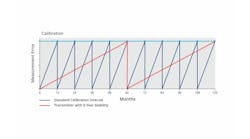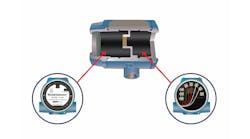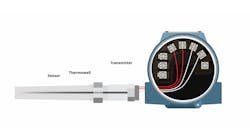| T |
hermostatic controls for indoor environments first appeared in the 1880s. Both Honeywell and Johnson Controls can make a case for being first to market with this technology. While the replacement of coal with fluid fuels (heating oil, propane, natural gas) made thermostatic controls more responsive, it was the widespread adoption of central air conditioning in the decades after World War II that made feedback control of indoor variables (temperature, humidity, pressure) much more important to building comfort levels and economic performance.
Since then, Heating, Ventilation and Air Conditioning (HVAC)control has always been a distinct marketplace characterized by relatively low-cost, low-accuracy, low-reliability technology. If HVAC controls fail, building occupants might become uncomfortable, but this is never usually the end of the world. Evidently though, nobody told NIST (National Institute for Standards & Technology).
When the planning began for NIST’s Advanced Measurement Laboratory (AML) in the early 1990s, the planners were conscious of the need to push the state-of-the-art in indoor environment control significantly to meet the anticipated requirements in semiconductor, biotechnology and other advanced manufacturing industries. Of primary concern were temperature, vibration, humidity and air quality. Baseline temperature control was specified at 0.25° C with certain spaces set at +/- 0.1 or even +/- 0.01° C. Vibration control was specified as 3 microns/sec. (0.5 microns/sec. in 27 low-vibration labs) and humidity control was set at +/- 5% down to +/- 1% in special labs.
To determine if these demanding specifications were possible and to qualify potential suppliers, a full-scale laboratory mock up was constructed to conduct feasibility testing. A number of environmental controls suppliers participated in this research which was directed by Ted Zsirai from Henningson, Durham & Richardson, Inc. (www.hdrinc.com) the AML building’s architects and mechanical designers. According to “Advances in Temperature Control in Metrology Laboratories” a paper presented at the National Conference of Standards Laboratories (NCSL) in 1996, “Eliminating temperature fluctuations in the laboratory has long been an elusive goal for Metrology Laboratories. Prior to the construction of a new laboratory building at NIST, an air conditioning design for temperature stability of +/- 0.01° C was developed and tested in a full-scale lab mock-up. Initial tests have shown the design to perform as accurately as +/- 0.005° C under certain conditions of steady-state and within the criteria under conditions of specific heat loads and disturbances.”
The typical laboratory module proposed for AML was 7.0m X 3.5m X 3.5m. The design team decided to use a space equal to 3/4ths of this area for the test module. At the selected air flow rate (5,000 l/hr or about 280 air-changes/hr), the maximum allowable heatgain to preserve the 0.02° C temperature span is 123 W. Normal heat gain from a human body is about 100 W depending on activity level.
Initially, three vendors were qualified in the environmental control testing begun in â92-â93. With the design completed and feasibility confirmed by 1996, funding delays put this project on the shelf for several years (sound familiar?). When the AML Project was reactivated (ground-breaking occurred in June, 2000) a fourth vendor had been qualified and the control system design was updated including the incorporation of BACnet as the operative protocol.
The AML, dedicated on June 21, 2004, is a $235 million, 536,507 sq.ft facility that can support some of the world’s most delicate experiments in nanotechnology and measurement at the atomic level. The AML features five separate wings and should enable sophisticated measurement and standards development to support U.S. Industry and its scientific community well into the 21st century.
The AML control system is indeed a tour de force. Hats off to NIST Plant DivisionAML Project Office, the mechanical team at HDR, Inc. and others involved in this truly cutting edge advance in building automation!




